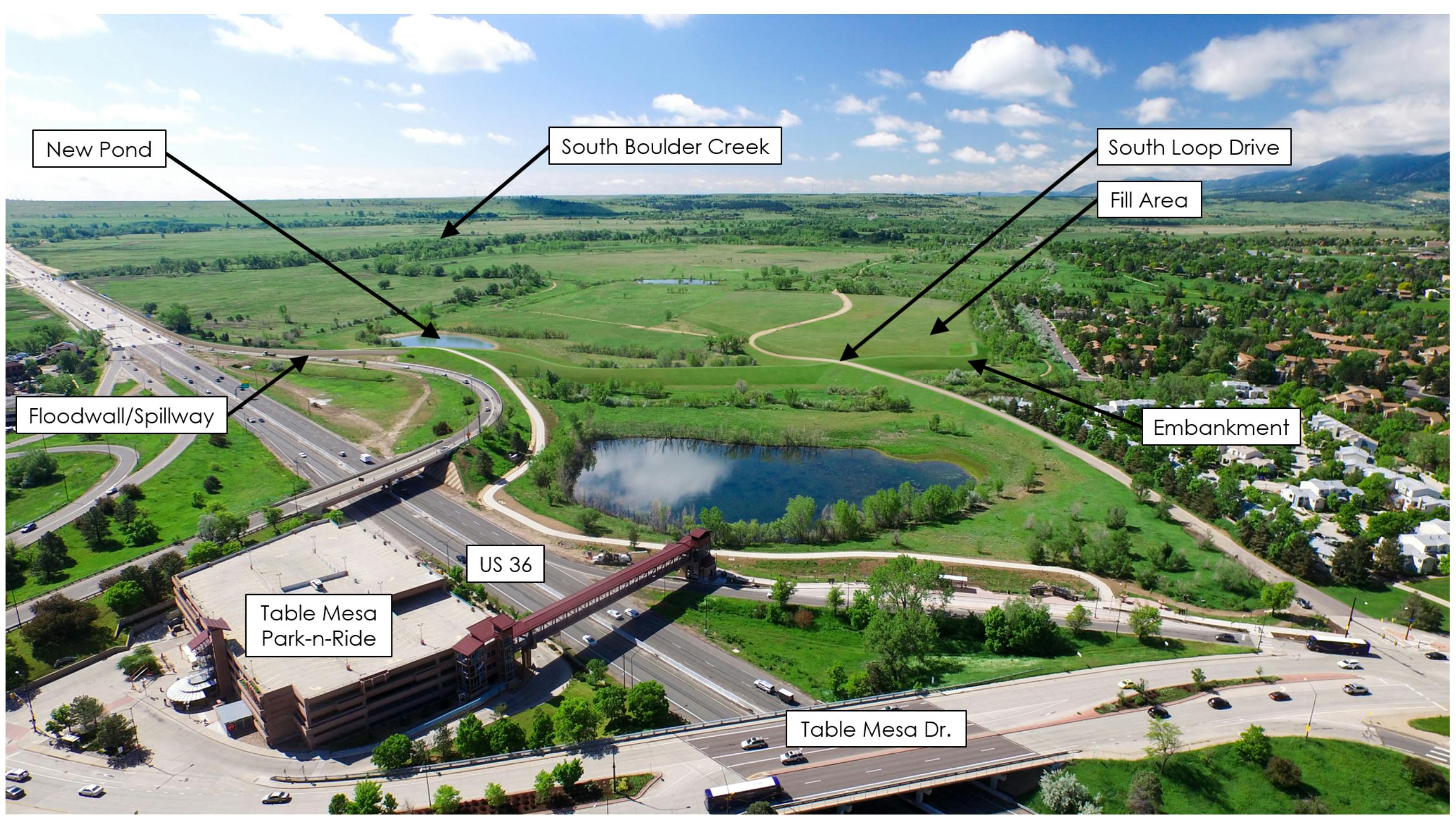South Boulder Creek Flood Mitigation/CU South
The South Boulder Creek Flood Mitigation Project is a 17-year effort to study and take community/and advisory board feedback about how best to protect residences and parts of town that are at risk for catastrophic flooding from the South Boulder Creek drainage-way.
In February 2020, City Council indicated a preference for a 100-year flood protection because it has the least environmental impacts, the lowest cost and the greatest probability of meeting the project design criteria. Prior to making a formal flood design level recommendation on June 16, 2020, City Council has requested that staff update the public on the project status and seek input on the remaining items at this stage in the conceptual flood design. Specific topics of interest, including upstream detention viability and and open space and environmental mitigation, will be areas of focus at the June 3, 2020 Open Space Board of Trustees (OSBT) meeting.
The purpose of this Be Heard Boulder Project page is to give the Boulder community an opportunity to ask questions and share thoughts related to flood project tradeoffs, design or flood design information previously provided to council.
The following is a graphic that shows engagement related to the flood design between now and mid-June 2020.






